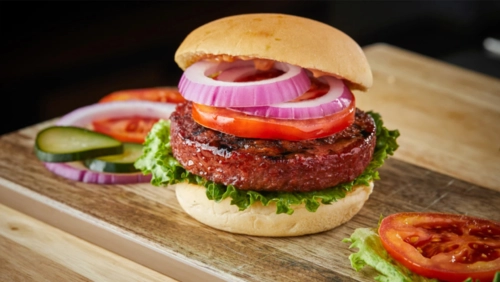According to their insights into consumer behavior and conversations with industry professionals and experts, prominent entities such as the U.S. news program Today, food magazine FOOD & WINE, health-focused magazine EatingWell, international chain Whole Foods Market, and market research firm Mintel have each released their predictions for the 2024 food trends. These forecasts highlight a continuation of trends from 2023, including the rise of non-alcoholic beverages, emphasis on healthy diets, and the popularity of spicy flavors, while also pointing to emerging new trends. Clearly, health, convenience, and innovation have become the defining themes in the culinary world for 2024.

The popularity of non-alcoholic beverages continues to soar.
Non-alcoholic beverages are not a new trend; in recent years, sectors such as non-alcoholic cocktails and non-alcoholic beers have rapidly expanded. They have secured a place in restaurants, bars, and other dining venues. Joey Skladany, a writer for TODAY, notes that beyond these venues, non-alcoholic beverages are now expanding into new territories. It is expected that non-alcoholic wines, cocktails, and mixers such as Sprite and soda will occupy significant shelf space in supermarkets. Additionally, upscale restaurants are likely to develop innovative non-alcoholic accompaniments.
The continuous dominance of non-alcoholic beverages on trend lists directly correlates with shifts in public lifestyle preferences. Alex Loh, Food Editor at EatingWell, states, "People want to follow a low-alcohol or alcohol-free lifestyle." Simultaneously, the public does not wish to sacrifice social experiences; "they want the experience of drinking non-alcoholic beverages during social occasions to be as special as traditional cocktails." Consequently, wines, beers, and various spirits (including gin, whiskey, and rum) have developed non-alcoholic versions, which are increasingly penetrating various social settings.
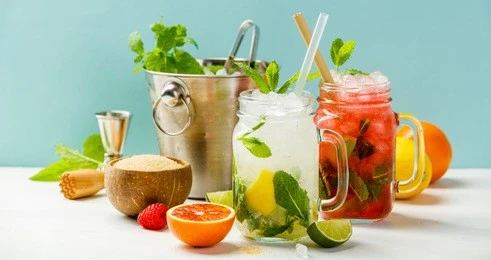
Bandbox Orlando, a bar in the United States, focuses on serving non-alcoholic beverages. Kevin Zapf, the bar manager, predicts that innovations related to non-alcoholic cocktails will increase in 2024. Some dining establishments have already begun preparations. Marissa Valdez, Dining Director at ULUM Moab resort in Utah, explicitly states that in 2024, the resort will expand its offerings of non-alcoholic cocktails, incorporating local botanicals such as jasmine, selenite, and fireweed
Peppers are gaining popularity
"Fiery Hot" is one of the key food trends in 2024, according to the expert committee at the international chain supermarket Whole Foods Market. They state that "hot peppers from around the globe are gaining popularity, and the heat surrounding peppers is only increasing." Various pepper products "are emerging on shelves everywhere," with classic pepper sauces from different parts of the world, such as salsa, Tabasco, Korean chili paste, and Chinese chili sauce, having long served as food condiments. However, these classic pepper sauces are now being integrated more frequently and creatively into a variety of foods such as potato chips, popcorn, and beverages
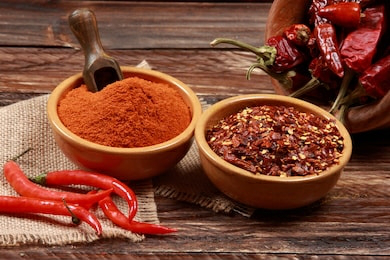
According to Gareth Mullins, Executive Chef at Anantara The Marker Dublin Hotel in Ireland, the enduring popularity of peppers stems from their ability to consistently deliver exceptional flavors. As a chili enthusiast, he keeps Korean chili paste stocked in his kitchen year-round, praising its "rich flavor and delicious texture." Furthermore, the emergence of Generation Z as a significant consumer group has catalyzed reforms in the food industry. Andrew Freeman, founder of the American marketing agency af&Co, notes that Generation Z demonstrates a higher tolerance for spicy foods compared to previous generations, ensuring that spicy flavors will remain attractive.
Consequently, peppers are increasingly appearing in a wide array of dishes, beverages, candies, and snacks. Karla Walsh, author for Better Homes and Gardens magazine, predicts that in 2024, beverages like kombucha, smoothies, juices, and a variety of spicy condiments will likely experience a surge in popularity due to their inclusion of chili peppers. Jenny Zegler, Food and Drink Director at Mintel in Chicago, Illinois, believes that as the popularity of peppers grows, it opens up more possibilities for creative flavor combinations such as complex sweet-spicy, sour-spicy, and spicy-cream flavors in food and beverage categories.
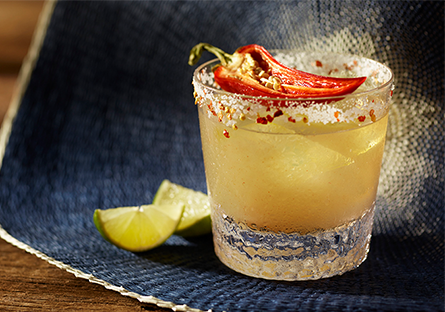
In pursuit of longevity, there is a growing emphasis on healthy longevity post-pandemic, with lifestyles and dietary habits shifting accordingly. Jenny Zegler notes that "consumers aged 40 and above occupy the largest share of spending on food and beverages in many global markets," highlighting their awareness of potentially longer lifespans and the desire to maintain health as they age. Therefore, healthspan—the period of healthy living—has become a key consumer focus for 2024.
Reflecting this trend in diets, consumers are increasingly specific about health-conscious choices. Danielle DeAngelis, editor at EatingWell, discusses several health-related changes anticipated for the upcoming year. Firstly, there is a notable rise in consumer attention towards gastrointestinal health, with a preference for foods and beverages that promote gut health. Secondly, previously overlooked topics such as menopause, driven by figures like Oprah Winfrey and Naomi Watts, are gaining traction. More people are seeking foods that alleviate menopausal symptoms and exploring dietary patterns suitable for this life stage.
Additionally, high-protein snacks and sugar-free products are expected to garner more attention in 2024. Consumers are recognizing the crucial role of protein in maintaining robust health and are becoming more aware of the benefits of reducing added sugar intake.

Plants are becoming crucial ingredients
In 2024, consumers are placing a greater emphasis on health and are increasingly demanding plant-based diets. They are shifting away from complex plant-based foods towards simpler, pure plant-based products. Kelly McCarthy, a journalist with ABC News, explains that the market is moving towards minimally processed plant-based products, highlighting high-protein options made from ingredients like mushrooms, walnuts, fermented Indonesian soybeans (tempeh), and legumes.
Moreover, consumers are not only satisfied with conventional plant-based alternatives to meats like pork or beef but are seeking more diverse options. Whole Foods Market's 2024 food trends list includes exquisite plant-based seafood products. Their expert committee has observed that some plant-based seafood brands are striving to replicate the flavors and textures of seafood effectively. Innovations range from mushroom scallops and carrot-based salmon to using konjac-based seafood in sushi rolls and seafood poké bowls.
Simultaneously, plants themselves are becoming increasingly important ingredients in various dishes. Joey Skladany notes that in 2024, there will be a heightened focus on incorporating plants and flowers creatively into cocktails, desserts, and other delicacies. Several chefs interviewed by Skladany emphasized that 2024 menus will prioritize health-promoting plants. Fernando Labra Degante, the dining manager at the upcoming Yuyang Weiyang Pavilion in Phuket, expects dishes to feature local flowers, spices, and plants to enhance customer health and sustainability awareness while deepening their connection to the destination. Executive Chef Jakob de Neergaard from Marchal, a Michelin-starred restaurant in Copenhagen, also plans to incorporate unique plants as "seasonings" in his dishes.
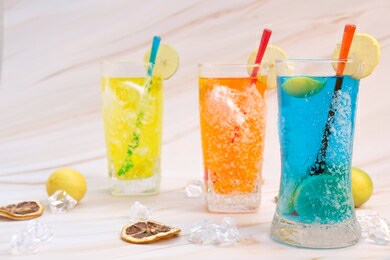
"Affordable Luxury"
"As we usher in 2024, the culinary world is witnessing a transformative trend—conscious indulgence," explains Wilfried Bergerhausen, Culinary Director at RMD Group, a marketing firm in the hotel and restaurant industry. "Conscious indulgence" entails making deliberate choices about food, preferring quality over quantity, and celebrating "affordable luxury" through dining experiences. According to Sarah Marion, Director of Integrated Research at Murphy Research, the rise of mindful eating may be contributing to this trend.
Caviar, long associated with luxury, is increasingly finding its way onto more shopping lists. With the evolution of social media, consumers are gaining a more accurate understanding of the health benefits and pricing of luxury ingredients like caviar. They are choosing to reward themselves with luxuries once considered out of reach and are innovating new ways to enjoy them. Francisco Lopez Jr., Executive Chef at MacArthur Place Hotel & Spa in the United States, observes a growing trend of creative caviar consumption methods, such as pairing it with waffles, using it as a dip for chips, or spreading it on French toast.

Brands and retailers are also adapting to consumer trends. According to Whole Foods Market's expert committee, some supermarkets are now featuring lists of "affordable luxury" items priced below $10. Brands are also introducing special meal packages to allow consumers to treat themselves with these affordable luxury foods, enhancing their sense of ritual and enjoyment.
Redefining convenient meals
Jenny Zegler, when introducing the "2024 Global Food & Beverage Trends" by Innova Market Insights, pointed out, "Convenience is an evolving concept, but the emergence of the pandemic accelerated consumers' desire for convenient access to high-quality food and beverage experiences in their daily lives." Technological advancements now allow food to exist in more convenient ways. Kat Kinsman, Senior Special Projects Editor at FOOD & WINE magazine, highlighted innovations such as pizza vending machines that bake frozen pizzas in three minutes, ensuring different types of food finish "cooking" at the same temperature and heating time. Additionally, the HOMEBAKE 425°/:30 pre-made meal brand utilizes existing kitchen ingredients to quickly generate recipes through an app. These developments reflect technology's role in driving innovation in the food sector and expanding the concept of convenient meals.
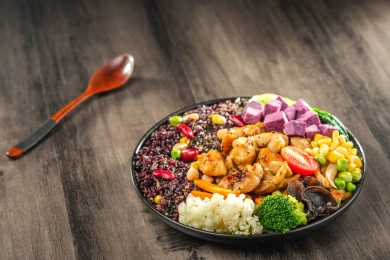
Another aspect of convenient meals is ease of consumption, which, driven by innovative ideas, has expanded into new dimensions. The American food brand Foodberry has used fruit and vegetable fibers to mimic fruit peels, creating edible food packaging. Products like chickpea dip, ice cream, and yogurt packaged in this material can be consumed directly without concerns about packaging disposal. As stated in the "2024 Global Food & Beverage Trends," "With technology simplifying meal planning, shopping, and cooking processes, a new era of convenience is emerging."
(Images from the internet)


